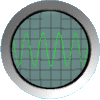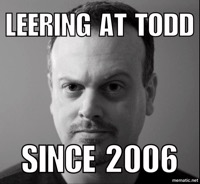 |
VO-BB - 20 YEARS OLD!
Established November 10, 2004
|
| View previous topic :: View next topic |
| Author |
Message |
georgethetech
The Gates of Troy

Joined: 18 Mar 2007
Posts: 1878
Location: Topanga, CA
|
 Posted: Fri Jun 10, 2011 10:32 am Post subject: Posted: Fri Jun 10, 2011 10:32 am Post subject: |
 |
|
So, how is a DeBreath tool different than a properly tuned downward expander or noise gate?
When I dial in the AU Dynamics effect that comes with Macs with the proper amount of ratio, it seems to debreath the track very nicely.
_________________
If it sounds good, it is good.
George Whittam
GeorgeThe.Tech
424-226-8528
VOBS.TV Co-host
TheProAudioSuite.com Co-host
TriBooth.com Co-founder |
|
| Back to top |
|
 |
D Voice
Been Here Awhile

Joined: 26 Jun 2010
Posts: 233
|
 Posted: Fri Jun 10, 2011 5:45 pm Post subject: "don't normalize your tracks before you start" Posted: Fri Jun 10, 2011 5:45 pm Post subject: "don't normalize your tracks before you start" |
 |
|
| Mike Sommer wrote: | | Also don't normalize your tracks before you start working on them. |
Could you explain this a little more, please?
I thought that it is advisable to DC offset first.
Isn't normalizing just simple math? I am admittedly naive, but would seem to me that normalizing would standardize the levels so that thresholds, etc. are consistent for the other effects. |
|
| Back to top |
|
 |
Mike Sommer
A Hundred Dozen

Joined: 05 May 2008
Posts: 1222
Location: Boss Angeles
|
 Posted: Fri Jun 10, 2011 8:39 pm Post subject: Posted: Fri Jun 10, 2011 8:39 pm Post subject: |
 |
|
Normalizing has nothing to do with DC offset. DC off set is when the signal has fallen off the baseline. The result is a loss of head room.
The first waveform shows the signal off the bass line by about 3 dB, thusly a loss of 3 dB of head room

What normalizing does is turn the volume up on the entire signal. It's like reaching over and turning up the volume knob up on the Hi-Fi, but in the Digital domain. Remember 0 dBfs is the absolute limit, i.e. there is no head room above 0.
So now if you start making adjustments to a track that has been normalized to 0 or even -3dbfs, you run moor of a chance of clipping the output. You can clip and un-normalized track too, so watch you output volume. This is way i say if your peaks are at or around -6 dBsf, you are right on the money.
SO, edit and contour your tracks before you normalize. Normalizing should be the last process of a final mix. Even then you should only normalize to -3 dBSF, never to 0.
_________________
The Blog:
http://voiceoveraudio.blogspot.com/
Acoustics are counter-intuitive. If one thing is certain about acoustics, it is that if anything seems obvious it is probably wrong. |
|
| Back to top |
|
 |
Jeffrey Kafer
Assistant Zookeeper

Joined: 09 Dec 2006
Posts: 4931
Location: Location, Location!
|
 Posted: Fri Jun 10, 2011 9:36 pm Post subject: Posted: Fri Jun 10, 2011 9:36 pm Post subject: |
 |
|
normalization should be used sparingly if at all. Most often I see files normalized to -.1db just because they want it to be loud. The problem with that is you increase your noise floor, too.
_________________
Jeff
http://JeffreyKafer.com
Voice-overload Web comic: http://voice-overload.com |
|
| Back to top |
|
 |
D Voice
Been Here Awhile

Joined: 26 Jun 2010
Posts: 233
|
 Posted: Fri Jun 10, 2011 10:43 pm Post subject: Posted: Fri Jun 10, 2011 10:43 pm Post subject: |
 |
|
| Quote: | | Normalizing has nothing to do with DC offset. DC off set is when the signal has fallen off the baseline. The result is a loss of head room. |
Yes, But I notice that most normalizing plug-ins seem to have DC offset included. Seemed to me that is partially the point- standardize the amount of head room available.
Since we are working digitally, why not take care of the few rogue peaks; normalize to something like -6 or -9dB (whatever won't be clipping when you add gain in the EQing or make-up gain), etc. then do the contouring, etc.?
At the very end, normalize again to the level that you desire to output, be that -3dB, or -0.1, or whatever.
Especially when comping tracks, or putting together dialogues, interviews, etc.
Again, maybe I am being too simplistic and I certainly lack the proper theoretical knowledge and terminology, but I am theorizing here that normalizing is just simple multiplication, so can easily be done (and redone, or undone if necessary) and doesn't leave artifacts that, say Noise Reduction or Compression might.
As both of the latter are examples of effects to be applied that kick in at specific thresholds, wouldn't it make sense to make sure those thresholds are being applied at approximately the same level?
Also theorizing, but since we are working digitally, where things like the size of the sample rate and bit rate matter, wouldn't there be fewer rounding errors(?) with a higher values as opposed to a lower values (again, so long as it is not clipping) as it works through the effects chain?
TIA |
|
| Back to top |
|
 |
Mike Sommer
A Hundred Dozen

Joined: 05 May 2008
Posts: 1222
Location: Boss Angeles
|
 Posted: Sat Jun 11, 2011 12:47 am Post subject: Posted: Sat Jun 11, 2011 12:47 am Post subject: |
 |
|
Yes a lot of plugins do have a DC offset correction. Look at your wave form. Is it offset? If it is, correct it. I personally have never had a problem with DC off set, and in some programs that can be corrected "adjusted" in the program its self. Because that is often a problem of the program and will translate to a loss of head room during recording. So if you see DC offset, fix it first before you start recording.
You can of course normalize down. But if you've clipped at 0 dBfs during recording, the damage has been done and there is nothing you can do to correct it. This is why the best practice is to record with proper levels (for me that is peaks at about -6dBfs). And Normalizing adds no artifacts to the recording.
If you set your levels correctly before you start recording, you shouldn't need to normalize. ( This may include using a compressor in your signal chain -set with a very modest compression- to control peaks. If done correctly and properly no one will know.)
Of course things happen and you may need to apply normalization.
But I wouldn't make "normalizing" my first procedure after recording. As you suggest the good thing about it is that it can make a track louder without the artifacts of digital compression, but the bad thing is that it makes the entire track louder. That is to say, if your noise floor is low or not low enough, you will hear it after normalization. This is way I say you want to do any of the changes to the track, such as noise suppression before you normalize up- which is what most people are doing when normalizing.
Also, normalization is often a destructive effect, while simple volume changes are not. If your DAW doesn't contain a very good "undo feature," normalization is often a one-way street.
"Audio normalization or "peak normalization" is the process of uniformly increasing (or decreasing) the amplitude of an entire audio signal so that the resulting peak amplitude matches a desired target (the norm). Where as dynamics compression, which applies varying levels of gain over a recording to fit the level within a minimum and maximum range based upon the selected threshold. "
| Quote: | | As both of the latter are examples of effects to be applied that kick in at specific thresholds, wouldn't it make sense to make sure those thresholds are being applied at approximately the same level? |
Applying normalization would not not change that. What would change that is adjusting the Volume levels on the track. Even with dynamic compression there are limitations to that too, which is way we apply a 75Hz Hipass filter so the compressor does not pump to the more powerful low frequencies.
| Quote: | | ....since we are working digitally, where things like the size of the sample rate and bit rate matter, wouldn't there be fewer rounding errors(?) with a higher values as opposed to a lower values (again, so long as it is not clipping) as it works through the effects chain? |
Correct, the higher the sample rate and bit depth the more accurate reproduction and less noise and a reduction of Quantization or rounding errors. This is why I like 48Hz 24 Bit or 44.1Hz 24Bit ( Unless asked otherwise I always use 24 Bit no matter what when recording.)
Even with the high sample rate, I keep the peaks around -6dBfs.
_________________
The Blog:
http://voiceoveraudio.blogspot.com/
Acoustics are counter-intuitive. If one thing is certain about acoustics, it is that if anything seems obvious it is probably wrong. |
|
| Back to top |
|
 |
D Voice
Been Here Awhile

Joined: 26 Jun 2010
Posts: 233
|
 Posted: Sat Jun 11, 2011 2:13 am Post subject: Posted: Sat Jun 11, 2011 2:13 am Post subject: |
 |
|
Thanks Mike. I guess it depends on how destructive the normalization process actually is.
Actually, of late I have been recording more in the -20 to -10dB range to be on the safe side (I usually set in one room, then record in the other), and to keep from pushing the preamps to hard,
So lately I have been normalizing UP (after the HPFF, removing any clicks and pops of course). As you say, that raises the noise floor, but there again, I figured this would make it somehow "easier" for the Noise Reduction analysis.
I suppose I have been thinking about normalization as a sort of calibration,
| Quote: | Quote:
As both of the latter are examples of effects to be applied that kick in at specific thresholds, wouldn't it make sense to make sure those thresholds are being applied at approximately the same level?
Applying normalization would not not change that. |
What I meant was, if the compressor, or de-esser, or whatever, was set to kick in at say -20dB; and then bends the slope more sharply at -9dB, wouldn't the levels of the track before this is applied make a difference? i.e. a track that peaked at -8dB would come out the other end of compression sounding very different than if that same track had been been peaking at (or normalized to) say -6 or -1dB before the compression, especially after they are ultimately normalized at the end. Wouldn't normalizing before contouring make things sound more consistent?
(Obviously, as you say, in an ideal world, the levels are set properly ahead of time, and remain consistent with every track, For that matter, ideally no contouring would be necessary at all- in a perfect world).
But just asking... |
|
| Back to top |
|
 |
Mike Sommer
A Hundred Dozen

Joined: 05 May 2008
Posts: 1222
Location: Boss Angeles
|
 Posted: Sat Jun 11, 2011 12:03 pm Post subject: Posted: Sat Jun 11, 2011 12:03 pm Post subject: |
 |
|
| Quote: | | Wouldn't normalizing before contouring make things sound more consistent? |
No, because all you've done is turn the the volume up on the entire track in a liner fashion. All the peaks are the same proportionally, they are only louder because you turn the volume up by normalizing up. Components like a compressor will react differently, because the threshold is being met, it is doing what it set to do.
This is why I say go through and adjust the TRACK volume first. This is what a sound engineer would do during a session; he would ride the pots raising and lowering the volume as needed. This is a pain in the butt, but you get a better product at the end, and threshold based components work more constantly.
This is way we should work toward getting the quietest recording environment that we can. Learn to work the mic better. Adjust our preamps and sound chains so that you have less noise and better output so that you can record at a proper level. Do the basic adjustments first in the DAW, then add components as you really need them. This all takes time, but time worth investing in.
_________________
The Blog:
http://voiceoveraudio.blogspot.com/
Acoustics are counter-intuitive. If one thing is certain about acoustics, it is that if anything seems obvious it is probably wrong. |
|
| Back to top |
|
 |
georgethetech
The Gates of Troy

Joined: 18 Mar 2007
Posts: 1878
Location: Topanga, CA
|
 Posted: Sat Jun 11, 2011 5:00 pm Post subject: Posted: Sat Jun 11, 2011 5:00 pm Post subject: |
 |
|
I find the easiest workflow is after recording (with peaks -12 to -6), normalize to -3db, apply a Stack in Twisted Wave with HPF, Parametric EQ, Dynamics (gate & comp), and normalize back to -3db again. This way you don't have to monkey with threshold settings every time since the levels coming in are consistent thanks to normalizing. Then after the Stack, normalize again to make up gain for total consistency.
This technique has made many a client of mine very happy...
Problem is, some software (such as Soundbooth) has a fixed normalize level of -.1db, which may be problematic. I'm not aware of a case in which normalizing to a value less than 0db is destructive any more than a volume adjustment is destructive. The process simply scans the selected waveform, finds the peak level, and bases the change of volume from that peak.
If I am wrong, someone will surely correct me.
Oh, and how is de-breath different from a noise-gate? Still curious about that one.
_________________
If it sounds good, it is good.
George Whittam
GeorgeThe.Tech
424-226-8528
VOBS.TV Co-host
TheProAudioSuite.com Co-host
TriBooth.com Co-founder |
|
| Back to top |
|
 |
Mike Sommer
A Hundred Dozen

Joined: 05 May 2008
Posts: 1222
Location: Boss Angeles
|
 Posted: Sat Jun 11, 2011 10:30 pm Post subject: Posted: Sat Jun 11, 2011 10:30 pm Post subject: |
 |
|
| Quote: | | I'm not aware of a case in which normalizing to a value less than 0db is destructive any more than a volume adjustment is destructive. |
Normalizing to near 0dbfs can introduce inter sample peaks.
In some situations, the converter can produce an analog signal that momentarily exceeds the level at the peaks of the digital signal from which it was converted. It a strange phenomenon when it it happens.
So if you must normalize, leave plenty of headroom, anything below 1.0 dBfs should be ok.
_________________
The Blog:
http://voiceoveraudio.blogspot.com/
Acoustics are counter-intuitive. If one thing is certain about acoustics, it is that if anything seems obvious it is probably wrong. |
|
| Back to top |
|
 |
captain54
Lucky 700
Joined: 30 Jan 2006
Posts: 744
Location: chicago
|
 Posted: Sun Jun 12, 2011 9:03 am Post subject: Posted: Sun Jun 12, 2011 9:03 am Post subject: |
 |
|
From waves.com
Unlike classic noise-gate type processors based solely on energy threshold, DeBreath uses a unique template-matching algorithm to detect breath segments and separate them from the signal. The breath can then be controlled without affecting the rest of the signal.
DeBreath lets you control the amount of gain reduction applied to the detected breaths and to add room tone where breaths were removed or attenuated, thus avoiding unnatural holes in the track. For better control, you can split the audio into two paths: the Vocal path and the Breath path. The sum of these two paths will always equal the original source, regardless of DeBreath settings. This way, you can apply different processing to the vocals than to the breaths. For example, you might compress only the voice path, leaving the breaths quieter, more open and natural. Or, you might choose to darken the removed breaths. |
|
| Back to top |
|
 |
asnively
Triple G

Joined: 17 Jun 2006
Posts: 3204
Location: Los Angeles
|
 Posted: Sun Jun 12, 2011 12:03 pm Post subject: Posted: Sun Jun 12, 2011 12:03 pm Post subject: |
 |
|
For reasons unknown, DeBreath is showing up in my Effects menu (Audition 3, Win 7) as "unsupported." 

I've uninstalled, rebooted, reinstalled, uninstalled, reinstalled, rebooted, uninstalled, reinstalled, rebooted, rebooted, rebooted; trashed my Audition preferences (and reinstalled); unplugged the iLok from the USB hub and stuck it straight into the computer; stood up, sat down, fought, fought, fought; sacrificed a goat.
I'm stuck.
_________________
the Amy Snively family of brands for all your branded thing needs.
Amy Snively
Faff Camp
FaffCon
TalkerTees |
|
| Back to top |
|
 |
Mike Sommer
A Hundred Dozen

Joined: 05 May 2008
Posts: 1222
Location: Boss Angeles
|
 Posted: Sun Jun 12, 2011 1:16 pm Post subject: Posted: Sun Jun 12, 2011 1:16 pm Post subject: |
 |
|
+1 the Captain's information.
I missed the question. But in basic simple terms I think of a Noise Gate like a garden gate. When you want to pass through the gate swings open, when not, it's closed.
De-Breath is more like a bouncer at a night club, sometimes you get in, sometimes you don't.
Amy, it sounds like there are some fragments leftover from that plugin still lingering. You may need to dig through some folders to find those residual tidbits.
_________________
The Blog:
http://voiceoveraudio.blogspot.com/
Acoustics are counter-intuitive. If one thing is certain about acoustics, it is that if anything seems obvious it is probably wrong. |
|
| Back to top |
|
 |
asnively
Triple G

Joined: 17 Jun 2006
Posts: 3204
Location: Los Angeles
|
 Posted: Sun Jun 12, 2011 2:11 pm Post subject: Posted: Sun Jun 12, 2011 2:11 pm Post subject: |
 |
|
What am I looking for? Where do I look? 
_________________
the Amy Snively family of brands for all your branded thing needs.
Amy Snively
Faff Camp
FaffCon
TalkerTees |
|
| Back to top |
|
 |
Brad Venable
Contributor IV

Joined: 23 Feb 2008
Posts: 129
Location: Dallas, TX, USA
|
 Posted: Sun Jun 12, 2011 2:28 pm Post subject: Posted: Sun Jun 12, 2011 2:28 pm Post subject: |
 |
|
Mac or PC, Amy?
_________________
Brad Venable
The Voiceover Superhero!
"Saving the world thirty seconds at a time." |
|
| Back to top |
|
 |
|
|
You cannot post new topics in this forum
You cannot reply to topics in this forum
You cannot edit your posts in this forum
You cannot delete your posts in this forum
You cannot vote in polls in this forum
|
Powered by phpBB © 2001, 2005 phpBB Group
|






